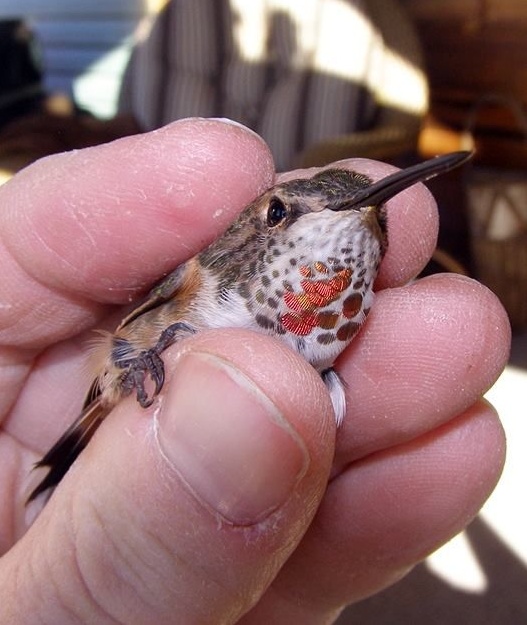
27 October 2015
Do you still have red flowers in your garden? Are your hummingbird feeders filled and clean? If so you might attract a rare bird.
Our ruby-throated hummingbirds (Archilochus colubris) have left for the tropics but a few hardy northwesterners visit Pennsylvania in the fall. They’re the Selasphorus hummingbirds.
The most likely visitors are rufous hummingbirds (Selasphorus rufus) that breed in the Pacific Northwest and as far north as Alaska. They’re used to cool temperatures and not bothered by our weather as long as they find enough to eat. During migration they range far and wide and often visit backyard feeders.
Solo birds can show up anywhere. Last year Hannah Floyd found one inside Phipps Conservatory during the 2014 Pittsburgh Christmas Bird Count. That female rufous wasn’t seen entering Phipps through an open window in October, but she was noticed when she hung out at the red powderpuff tree (Calliandra haematocephala) in the Stove Room.
Selasphorus hummingbirds are so rare in Pennsylvania that ornithologists work hard to band every one that’s found. Usually they’re identified as rufous hummingbirds but the species is so similar to the even-rarer-in-Pennsylvania Allen’s hummingbird (Selasphorus sasin) that the bird usually has to be in hand to tell.
If you see a hummingbird in your garden after mid-October, it’s rare! Call the National Aviary’s ornithologist Bob Mulvihill right away at 412-522-5729 (cell) or email him at robert.mulvihill@aviary.org or contact him via Facebook. He’ll stop by to capture and band it and you’ll get a chance to see it up close. He banded the female rufous pictured above in Carrolton, Pennsylvania on 19 October 2015.
To learn more about rare fall hummingbirds in western Pennsylvania at the National Aviary’s website: Winter Hummingbirds.
p.s. While you’re waiting for a rarity, watch hummingbirds spending the winter in West Texas on Cornell Lab’s West Texas Hummingbird Cam.
(photo by Bob Mulvihill)
My humming birds are gone for the season but on days that it isn’t freezing, I keep my little feeder filled as my favorite visitor, the chickadee, visits several times a day ! And if I’m on the porch and it needs filled, he immediately lets me know !!! I love feeding and watching my feathered friends !
Even more impressive is the immature male Rufous Bob banded near Brookville on Oct 17th. That hummer has been on-site since August 2nd. This is why it’s so important to keep a close eye on your hummers in August and September. You’re looking for rufous/orange on the tail. There could be a Selasphorus lurking in the RTHUs! See my website for pix of the Jefferson Co RUHU.
How would he capture them? My hummers left the last Thursday in September from Butler, PA and I just this morning brought in the feeders for the season. Maybe I should put them back out for a while?
Kimberly, I’m not sure how he does it. Perhaps a mist net.